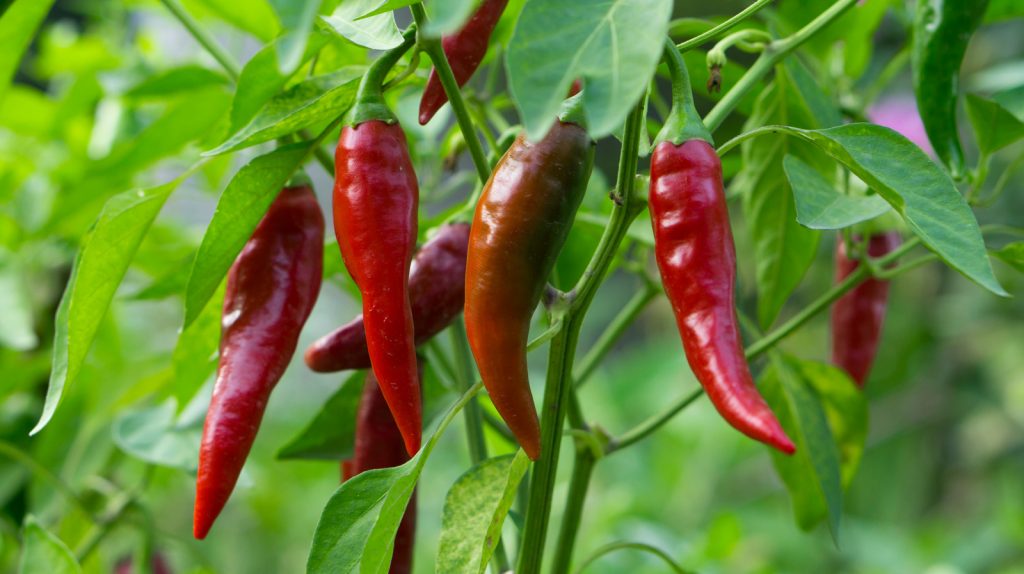The initial English immigrants to the nests brought the seed of priceless veggies with them to plant in the New Globe. By the middle of the 18th century, North Americans might import lots of ranges of veggies and flowers from England. John Randolph of Williamsburg, Virginia wrote writing on veggies grown in the New Global colonies. In the essays, he described “Capsicum, it needs to be gathered prior to the husks grow hard for pickles. Research carried out located that records-maintained Mount Vernon suggests George Washington expanded a sort of “Cayan” pepper.
If you need to buy wholesale peppers, please visit Poivre.
HOT PEPPERS
- Cayenne. This chili is conical and slim, ranging in size from 3-8 inches. Cayenne is often dried. The crossbreed Super Cayenee is the 1990 All-American Selection Winner. It is extremely efficient, early to mature, and hot, warm, hot.
- Red Chili. The tiny cone-shaped chilies of this kind are 1-3 inches in length, as well as are having medium-thick flesh. They’re typically utilized dried as well as ground in pepper powder. Super-hot, a 1988 AAS Champion is the first crossbreed pepper. The compact herbs were produced for increased yields.
- Eco-friendly Pepper: These are the lengthy, around 7-8 inches, green, two-celled softly pungent Anaheim-type chilies that are so savory in chili Rellenos. They redden at maturation but are virtually always collected, baked, green, as well as peeled. They’re the kind you’ll find in the tinned items area of grocery stores labeled “Green Chili Peppers.”
- Hungarian Yellow Wax, likewise called Hot Banana: This pepper is pungent but still among mild “hots.” It is 5-6 inches long as well as chosen when an immature green-yellow shade; however, matures to orangish-red. This kind benefits canning or pickling.
- Jalapeno: Jalapenos are among the popular peppers utilized in numerous Mexican meals. They are 2-4 inches long as well as have thick-walled pungent skin. They might be harvested when immature green or fully grown red as well as benefit from canning or pickling. There are many ranges of jalapeno peppers with differing levels of pungency. It has been said that more than 200,000 extra pounds of jalapeno seed are planted in Mexico annually!
- Red Cherry: This hot pepper is just 1 and 1/2 inches throughout, as well as shaped like a cherry. It may be used pickled or fresh, mainly marinaded.
- Red Hot Peppers: There are various other Capsicum annuum in the Longum Group that adds a distinct taste to their native local cuisines. These differ in fruit and plant shapes and sizes. Smaller-sized plants are attractive in hanging baskets and patio containers. These scorchers such as Chili Tepine, Tabasco, Chile Peguin, and Thai, mature red, as well as zest-up foods. Lots of extra kinds are available. Small hot yellow peppers like Santa Fe Grande and Cascabella are utilized primarily for canning and pickling. There is the hot Serrano type that is prominent in the Southwest. There is Habanero, said to be 50 times hotter than Jalapeno peppers.
PLANTING
Select a bright location in the yard as peppers require full sunlight to bloom and established fruit. Growth in full sun will lead to an extra efficient plant. Select a spot safeguarded from the wind as pepper plants have shallow, quickly disturbing roots, as well as fragile branches. A solid wind might damage stems or completely root out the plants.
The plant will carry out the ideal in well-drained soil with sufficient nutrition for plant development. To guarantee appropriate nutrition, utilize fertilizers or function in well-rotted dressing when preparing the yard soil when it’s the spring season.

